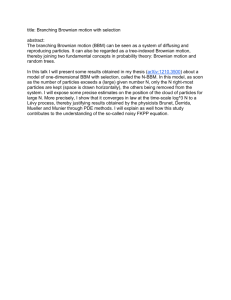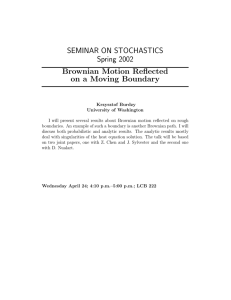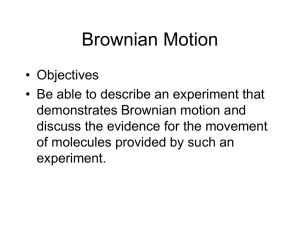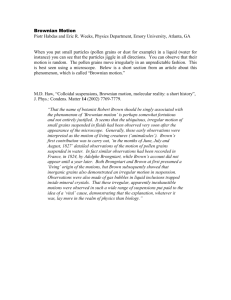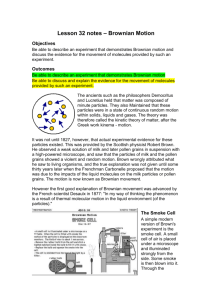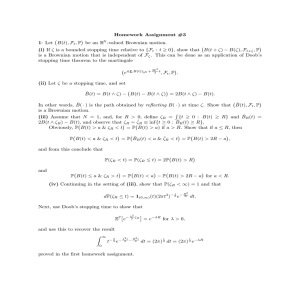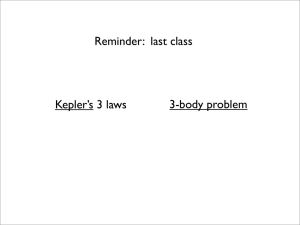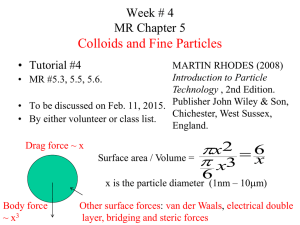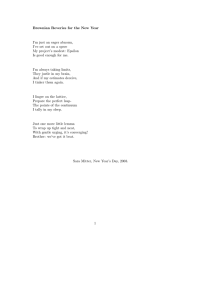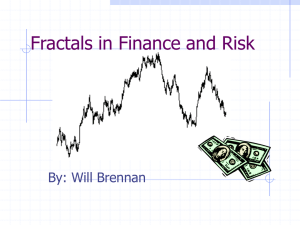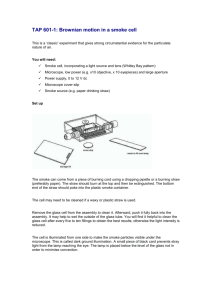FIRST YEAR LABORATORY: PROJECT PROPOSAL
advertisement
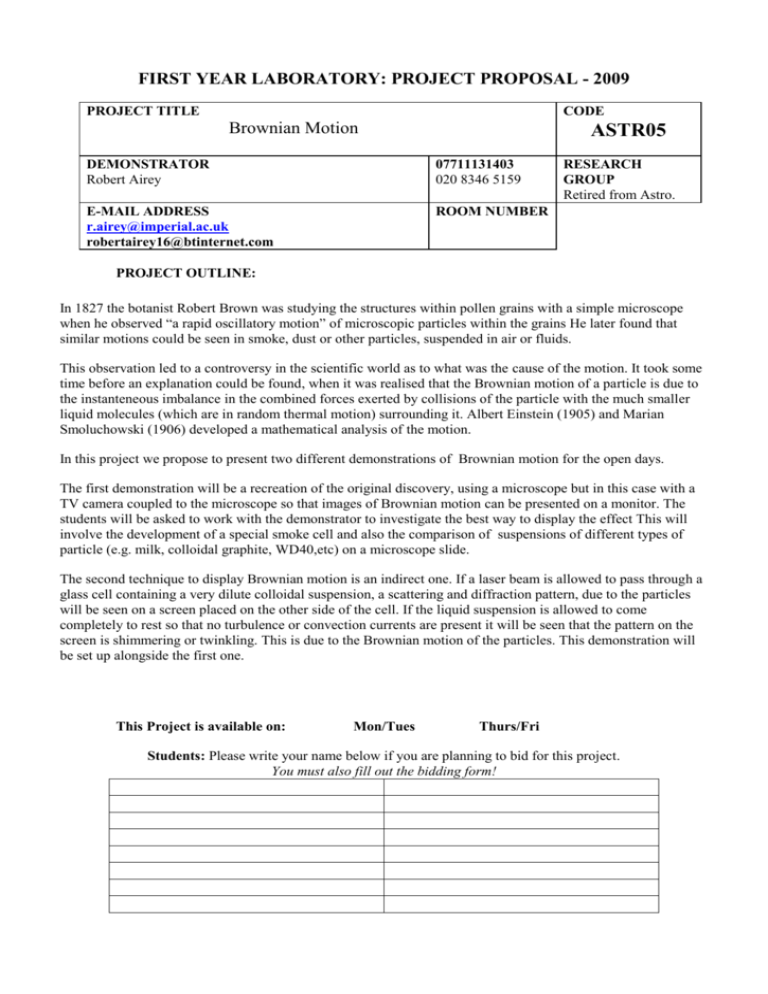
FIRST YEAR LABORATORY: PROJECT PROPOSAL - 2009 PROJECT TITLE CODE Brownian Motion ASTR05 DEMONSTRATOR Robert Airey 07711131403 020 8346 5159 E-MAIL ADDRESS r.airey@imperial.ac.uk robertairey16@btinternet.com ROOM NUMBER RESEARCH GROUP Retired from Astro. PROJECT OUTLINE: In 1827 the botanist Robert Brown was studying the structures within pollen grains with a simple microscope when he observed “a rapid oscillatory motion” of microscopic particles within the grains He later found that similar motions could be seen in smoke, dust or other particles, suspended in air or fluids. This observation led to a controversy in the scientific world as to what was the cause of the motion. It took some time before an explanation could be found, when it was realised that the Brownian motion of a particle is due to the instanteneous imbalance in the combined forces exerted by collisions of the particle with the much smaller liquid molecules (which are in random thermal motion) surrounding it. Albert Einstein (1905) and Marian Smoluchowski (1906) developed a mathematical analysis of the motion. In this project we propose to present two different demonstrations of Brownian motion for the open days. The first demonstration will be a recreation of the original discovery, using a microscope but in this case with a TV camera coupled to the microscope so that images of Brownian motion can be presented on a monitor. The students will be asked to work with the demonstrator to investigate the best way to display the effect This will involve the development of a special smoke cell and also the comparison of suspensions of different types of particle (e.g. milk, colloidal graphite, WD40,etc) on a microscope slide. The second technique to display Brownian motion is an indirect one. If a laser beam is allowed to pass through a glass cell containing a very dilute colloidal suspension, a scattering and diffraction pattern, due to the particles will be seen on a screen placed on the other side of the cell. If the liquid suspension is allowed to come completely to rest so that no turbulence or convection currents are present it will be seen that the pattern on the screen is shimmering or twinkling. This is due to the Brownian motion of the particles. This demonstration will be set up alongside the first one. This Project is available on: Mon/Tues Thurs/Fri Students: Please write your name below if you are planning to bid for this project. You must also fill out the bidding form! Code: PROJECT ASSESSMENT SHEET – 2009 Leave blank Are there any safety aspects which need special attention (i.e. use of lasers, radioactive sources)? Is this a computing project? If it is would it be done on: [a] The PC network [b] Computing facilities within your research group If the answer to [a] was yes then complete the following three questions: [i] Do you require additional software or libraries? [ii] Do you anticipate exceptional cpu or disk storage (>100Mbyte) requirements? [iii] Have you discussed your requirements with Martin Morris? Which programming language are you wishing to use? Are you proficient in the necessary programming language
